Ap Biology Anatomy & Physiology Test Questions – Flashcards
Unlock all answers in this set
Unlock answersquestion
anatomy
answer
study of the biological form of an organism
question
physiology
answer
study of the biological functions an organism performs
question
levels of organization
answer
1. cell 2. tissue 3. organ 4. organ system
question
germ layers
answer
tissue layers in the embryos of animals (endoderm, mesoderm, ectoderm)
question
organ
answer
one functional unit of tissues
question
organ system
answer
organs working together to perform a specific function
question
tissue
answer
a group of related cells
question
dorsal cavity
answer
contains the brain and spinal cord
question
ventral cavity
answer
located along the front of the body, contains the body organs and maintain homeostasis
question
thoracic cavity
answer
cavity housing lungs and heart
question
abdominopelvic cavity
answer
made of an upper part called the abdominal cavity and a lower called the pelvic cavity
question
epithelial tissue
answer
tissue that covers outside of the body and lines organs and cavities; tightly bound to form a protective layer; highly regenerative
question
simple epithelial
answer
single layer of cells
question
stratified epithelial
answer
multiple layers of cells
question
squamous
answer
flat
question
cuboidal
answer
cube
question
columnar
answer
tall and wide
question
gland
answer
a group of specialized epithelial cells that are capable of producing secretions
question
connective tissue
answer
tissue that provides support for the body and connects all its parts; has an extracellular matrix (secreted by fibroblasts) made of collagen, elastin and reticulin
question
loose connective tissue
answer
less packed connective tissue which makes it loose and flexible, includes adipose
question
adipose
answer
fat reserve cells
question
dense connective tissue
answer
have large amounts of either collagen fibers (making them strong) or elastic fibers, or both, includes tendons and ligaments
question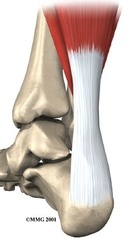
tendon

answer
connects muscle to bone
question
ligament
answer
connects bone to bone
question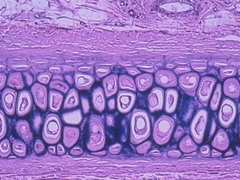
chondrocyte

answer
cartilage, connects and cushions joints
question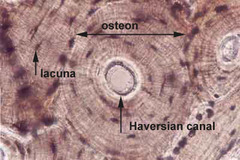
osteocyte

answer
bone, calcified cells that provide sturdy support
question
plasma
answer
liquid part of blood
question
erythrocyte
answer
red blood cell
question
leukocyte
answer
white blood cell
question
thrombocyte
answer
platelet
question
muscular tissue
answer
tissue that moves the body and its parts; striated muscles contain actin and myosin filaments for contraction
question
smooth muscle
answer
involuntary, in walls of blood vessels and viscera, one nucleus
question
skeletal muscle
answer
voluntary, attached to bones, multinucleated, striated
question
cardiac muscle
answer
involuntary, single nucleated, striated, have gap junctions to link adjacent cells and help the heart perform as one unit (intercalated disks)
question
nervous tissue
answer
tissue that senses stimuli, integrates and analyzes them, and controls the body's response
question
neuron

answer
main cell of the nervous system
question
neuroglia
answer
cells that support neurons (ex: Schwann cells)
question
cell body
answer
contains nucleus of the neuron
question
dendrite
answer
receive stimuli; highly branched extensions
question
axon
answer
conduct and propagate impulses
question
Schwann cell
answer
support and insulates axons using a myelin sheath
question
node of Ranvier
answer
gap between myelin sheaths that expose the axon, help accelerate impulses
question
saltatory conduction
answer
rapid jumping of an impulse from node to node
question
motor neuron
answer
sends impulses to muscles to create movement
question
sensory neuron
answer
pick up stimuli from the environment and send to the brain
question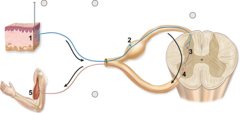
interneuron

answer
neurons in the CNS that communicate internally and connect sensory to motor neurons; are responsible for reflexes
question
nervous system
answer
system that is responsible for body intercommunication, picking up and responding to stimuli, and stimulating movement
question
endocrine system
answer
system that is responsible for sending out hormones that regulate homeostasis in the body
question
muscular system
answer
system that is responsible for carrying out voluntary movement
question
skeletal system
answer
system that is responsible for creating a rigid framework
question
digestive ssytem
answer
system that is responsible for food breakdown and nutrient absorption
question
circulatory system
answer
system that responsible fordistributing nutrients, oxygen and other vital materials throughout the body
question
respiratory system
answer
system that is responsible for gas exchange
question
urinary system
answer
system that is responsible for waste elimination
question
integumentary system
answer
system that is responsible for protecting the outer body
question
immune system
answer
system that is responsible for protecting the inner body from pathogens
question
reproductive system
answer
system that is responsible for producing gametes and reproducing
question
homeostasis
answer
tendency to maintain a balanced or constant internal state
question
stimulus
answer
change or signal in the environment that can make an organism react
question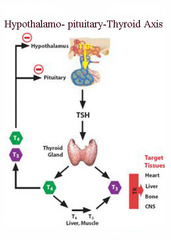
negative feedback

answer
process that reduces stimuli to return organism to homeostasis
question
positive feedback
answer
process that amplifies stimuli away from homeostasis
question
effector
answer
organ or cell that acts in response to a stimulus
question
integrator
answer
organ that evaluates condition change
question
thermoregulation
answer
process of maintaining an internal temperature within a tolerable range; adaptations for this include: - insulation (fur, blubber, feathers) - countercurrent circulation - sweating - behavioral responses (shivering) - adjustig metabolic hear production (antifreeze)
question
endotherm
answer
organism that is internally warmed by generating heat through metabolic processes
question
ectotherm
answer
organism that is externally warmed by behaviors
question
radiation
answer
transfer of heat through the sun's electromagnetic waves
question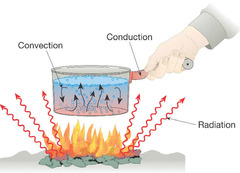
conduction

answer
transfer of heat through direct contact
question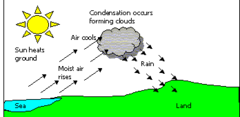
convection

answer
transfer of heat through movement of liquid or gas
question
evaporation
answer
transfer of heat through water vaporization
question
torpor
answer
stage in which an animal saves energy through moving less and decreasing metabolic processes



